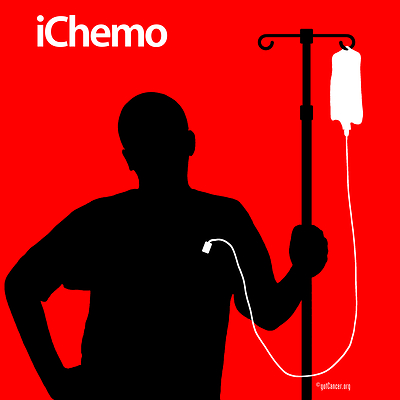Andy was presented with three choices regarding his post-surgical cancer care. Every medical professional we’ve seen has made a point to mention that having choices is a good thing, because they wouldn’t give us measly know-nothing patients a say if we could make a bad call. Thanks for vote of confidence, medical community. But basically they’re trying to reassure us that in every scenario Andy will be okay; these choices really involve our mental health and lifestyle preferences.
Option 1: Do nothing. There’s an 80% chance that the surgery Andy had to remove the tumors was enough; the cancer will never come back. Of course he would have to get monitored on a regular basis to make sure, but even if the cancer returned, it’s a sort that’s slow growing enough that there’s no real risk. As long as he stuck to his surveillance schedule they would catch it with plenty of time and squash it away before it could do any harm. And anyone who knows my husband knows he would stick to his surveillance schedule. But would he worry and fret between check-ups? Anyone who knows my husband knows that, yes, he would do that too. Another problem: if the cancer came back, squashing it would require much more serious and debilitating drugs than what would be used now; see options 2 and 3.
Option 2: Radiation. Basically, he would go in every day for a few weeks and have cancer fighting rays zapped down on his abdomen. The point would be to kill any tiny cancer cells that had escaped but that were too small to be be detected by his CT scan (because no spreading was detected on his CT scan). This would reduce the odds of recurrence from 20% to less than 5%. Problem is, it would also probably make him horribly sick and more importantly, up his risk factor for colon cancer ever so slightly; his mom died from colon cancer.
Option 3: Chemo. A type of chemotherapy called carboplatin is a fairly new option for Andy’s type of cancer. It’s been used on other cancers for a long time so they know it doesn’t lead to any major long-term problems. Of course, it’s still chemotherapy so it’s not totally harmless and shouldn’t be administered unnecessarily, but it’s much more mild than the sort of chemos that would be used if a recurrence happened. Based on about 10 years of research, they’re thinking it has similar success rates as radiation, reducing the odds of recurrence to less than 5%. However, because it hasn’t been around too long it’s impossible to know this for sure. But it’s a lot easier on the body than radiation. You get one injection and then wait it out for three weeks or so. The vast majority of people experience only minor discomfort and keep working full-time.
So, what did Andy decide?
Drumroll please…

Andy wanted more peace of mind than surveillance alone could provide. To stay sane he needs to know a) he did everything he could to stave off recurrence, and b) recurrence is pretty darn unlikely. So that left him with radiation or chemo. Radiation is a perfectly good option for many, but he didn’t see the point in upping his risk, even ever so slightly, for another type of cancer to which he’s already genetically predisposed — especially when there’s another perfectly good option on the table. So that left chemo. Even after the chemo he’ll still need to get his blood tested for cancer markers quarterly and have annual CT scans in the event that he’s in the unlucky 5%, but that’s manageable enough that we will hopefully be able to return to Benin to finish out our tour. The State Department’s medical office is telling us that should be fine, but we’ll see what happens when it’s time for an official decision.
So, that’s that.
Andy is scheduled to start chemo on February 13. I guess I have to let him off the hook for Valentine’s Day this year, huh?

7 Responses to treatment options